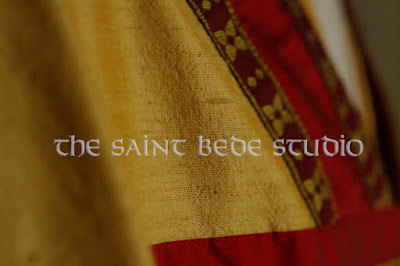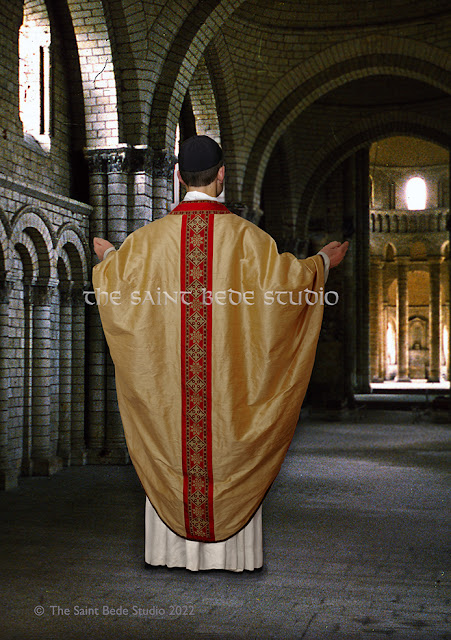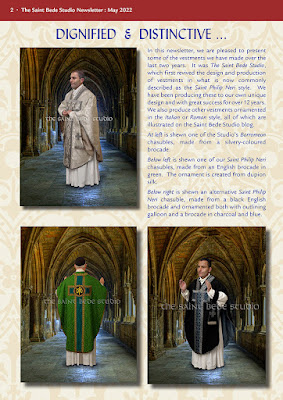 |
| Father Adrian Fortescue |
"In the eighteenth century a desolating wave of bad taste passed over Europe. It gave us Baroc churches, tawdry gilding, vulgarities of gaudy ornament instead of fine construction. It passed over clothes and gave us our mean, tight modern garments. And it passed, alas! over vestments too, and gave us skimped, flat vestments of bad colour, outlined in that most impossible material, gold braid, instead of the ample, stately forms which had lasted until then....For these curtailed shapes are not the historic ones which came down hardly modified for so many centuries. They are a quite modern example of Baroc taste...Skimped chasubles, gold braid and lace are not Roman; they are eighteenth century bad taste."
So wrote one of the most illustrious ecclesiastical scholars of the early twentieth century, the Rev'd Dr Adrian Fortescue. This is an extract from a lecture which he gave to the Altar Society of Westminster Cathedral in 1912. Dr Fortescue's name is, somewhat regrettably, better known for the ceremonial manual which he prepared in order to raise money for the building of his Parish church :
The Ceremonies of the Roman Rite Described, which has run into many editions, over an entire century.
Dr Fortescue made these counter-cultural comments more than a century ago, but each new generation of Catholics, believing it has the true interpretation of Tradition, has to be reminded of them afresh.










